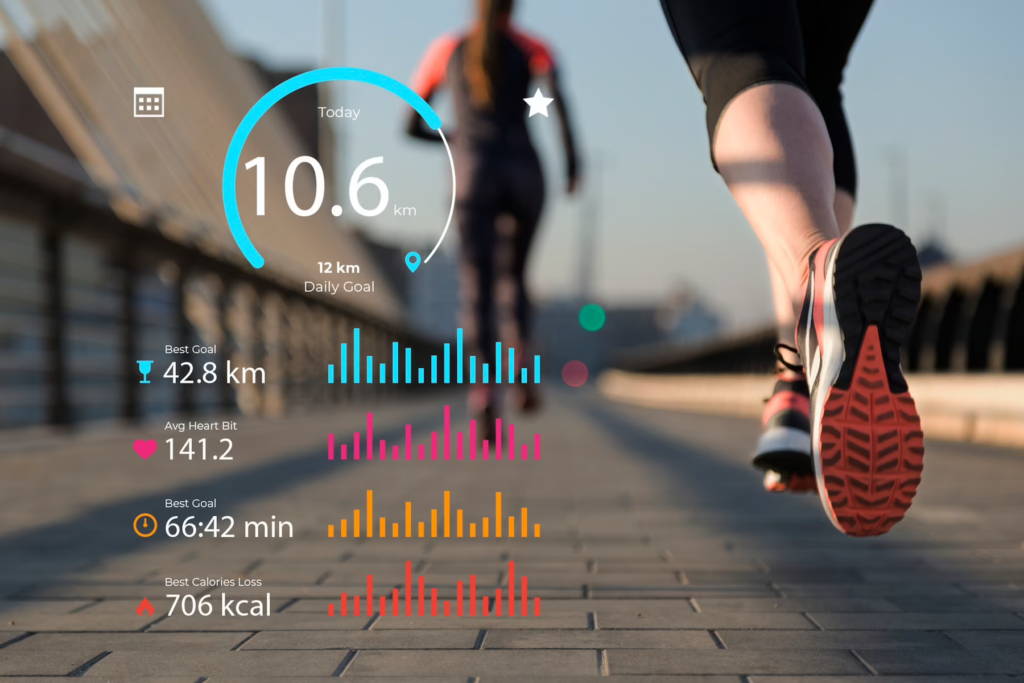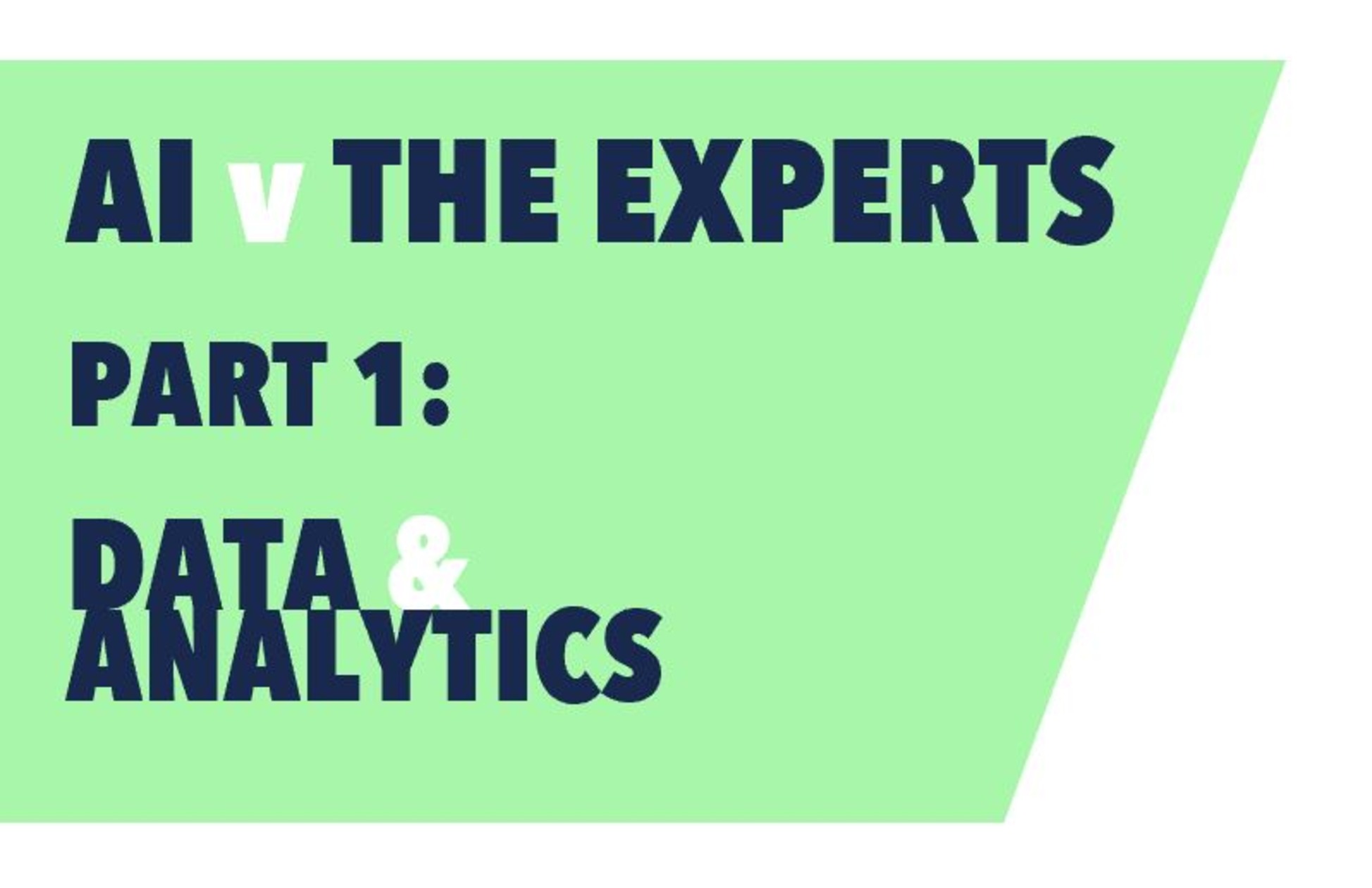Chat GPT Vs The STA Group on Data and Analytics
Chat GPT
Over the past 12 months, data and analytics have continued to revolutionize the world of sports, with significant advancements and applications across various aspects of the industry. The availability of data, coupled with increasingly sophisticated analytics tools, has empowered teams, athletes, and organizations to gain deeper insights, make data-driven decisions, and optimize performance like never before. In this article, we will explore some of the key developments and trends in data and analytics in sports over the last year.
Player Performance Analysis
One of the most prominent areas where data and analytics have made a significant impact is player performance analysis. Wearable technology, such as GPS trackers, accelerometers, and heart rate monitors, has become commonplace among athletes, providing a wealth of data on their physical attributes, movements, and physiological responses. Over the past year, advancements in this technology have led to more accurate and granular data collection, enabling teams and coaches to better understand individual player capabilities and workload.
This data is crucial for injury prevention and workload management. By monitoring players’ physical metrics in real-time, teams can identify signs of fatigue and overexertion, allowing them to adjust training regimes and minimize the risk of injuries. Additionally, this data is used to create personalized training programs that cater to each athlete’s specific needs, maximizing their potential and optimizing performance.
Game Strategies and Decision-Making
In the past 12 months, data-driven insights have continued to influence game strategies and decision-making in sports. Coaches and analysts now have access to real-time data during matches, allowing them to make informed decisions on the fly. Through the use of advanced analytics, teams can analyze opponent tendencies, track player positions, and assess game situations to devise optimal strategies.
The integration of Artificial Intelligence (AI) and Machine Learning (ML) in sports analytics has also grown significantly in the past year. These technologies can process vast amounts of data and recognize patterns that may not be immediately apparent to human analysts. This has led to the development of predictive models that can forecast game outcomes and player performance with greater accuracy, enhancing strategic planning and preparation.
Talent Identification and Recruitment
Data and analytics have become instrumental in talent identification and recruitment processes. Player tracking data, performance metrics, and advanced statistics are now used to identify emerging talents and assess their potential fit within specific teams or systems. Analytics allows teams to evaluate player performance across different leagues and competitions, enabling more informed and data-driven recruitment decisions.
Fan Engagement and Experience
The past year has seen an increased focus on fan engagement and experience through data and analytics. With the pandemic’s impact on in-person attendance, sports organizations have relied heavily on digital platforms and streaming services to reach fans. Through data analysis, organizations have gained valuable insights into fan preferences, behavior, and engagement patterns, enabling them to tailor content and marketing strategies accordingly.
Personalization has been a key theme in fan engagement. By analyzing data on individual fan interactions, organizations can deliver personalized content, offers, and experiences, fostering a stronger connection between fans and their favorite teams.
Injury Prevention and Rehabilitation
As injuries remain a significant concern in sports, data and analytics have been applied extensively to injury prevention and rehabilitation. By analyzing historical injury data, medical records, and training loads, teams can identify injury risk factors and design targeted prevention strategies. During rehabilitation, wearable technology and data analysis help monitor players’ progress, ensuring a safe and effective return to play.
Sports Betting and Fantasy Sports
Data and analytics have also had a profound impact on the sports betting and fantasy sports industries over the past year. With the growth of online betting platforms and fantasy leagues, data-driven insights have become crucial for bettors and fantasy managers seeking an edge.
Sophisticated algorithms and predictive models have been developed to analyze historical data, player statistics, and match outcomes, aiding bettors in making more informed decisions. Fantasy sports platforms have also leveraged data analytics to provide real-time player performance updates, match predictions, and optimized lineup suggestions to enhance the user experience.
Business Operations
Beyond the on-field applications, data and analytics have transformed the business operations of sports organizations. By analyzing fan data, ticket sales, and merchandise purchases, organizations can gain a deeper understanding of their audience and target their marketing efforts more effectively. This data-driven approach helps maximize revenue generation and optimize business strategies.
In conclusion, over the past 12 months, data and analytics have continued to shape the landscape of sports. From player performance analysis and game strategies to fan engagement, injury prevention, and business operations, the integration of data-driven insights has become increasingly prevalent. As technology advances and data collection methods improve, the impact of data and analytics on sports will undoubtedly continue to grow, unlocking new opportunities and driving further innovation in the industry.

The STA Group
The last year has seen the sports sector grow in sophistication with regards collecting and analysing data to inform decision making. The catalyst for this has been more confidence and knowledge in the wider market but, with some notable exceptions, the sector is far from claiming to be data-led.
Part of the issue is the silo that exists between the application of data in sports performance and business interests, which would include fan engagement and betting. Excellent technologies and agencies exist in industry areas but only a few sports organizations could claim they do both well, with few operating fully integrated databases giving them a single view of stakeholder behaviour across multiple touchpoints.
That said, the forecast is positive as sports industry organizations increasingly mirror operations of major global corporations. The new technologies that have emerged to capture and manipulate data are bringing fresh perspectives and opportunities.
First Party Data
The starting point for any conversation about data and analytics is often the quality of an organization’s first party data (FPD) – i.e., owned customer data. This information, understood and applied strategically, delivers greater profitability and efficiency in comparison to second (data received from trusted partners) or third-party sources (data from multiple sources sold for advertising).
A recent Google and BCG study found brands using FPD for key marketing functions achieved up to a 2.9x revenue uplift and a 1.5x increase in cost savings. Despite its clear benefits most organizations aren’t yet harnessing FPD’s full potential.
The growth in development of owned and operated platforms, such as OTT services and apps, plus data capture initiatives delivered by email, SMS or QR codes, demonstrate rights holders’ quests to source valuable FDP, which has been largely overlooked in the digital era until now. Indeed, rights holders continue to distribute vast amounts content and IP via social media platforms and, in doing so, lose crucial first party relationships.
The focus on O&O (owned and operated) has been further accelerated by recent changes to data-collection methods. Chiefly, the move to cookie-less browsers has forced organizations to move away from their reliance on third-party data.
Live Experience
The in-person versus at home experience is an ongoing battle, with data integration and capture at stadiums becoming a key tool in improving the experience for matchday fans who attend fixtures.
Whilst electronic scoreboards, programmable display systems and large-screen video displays are now commonplace, their evolution continues; LA’s SoFi Stadium, which hosted SuperBowl 56 in February, impressed with its 120-yard long ‘Infinity Screen’, suspended 122 feet above the field in an open loop. Not only is it the largest stadium display in the world but it is designed with images displayed on the interior and exterior vertical surfaces, so fans can get a clear view no matter where they’re sitting.
Such investments don’t just engage fans, it’s also about creating more direct revenue opportunities. Data can be used to drive additional advertising revenue from brands and sponsors. Think QR codes and other calls-to-action that drive consumers directly to brands products and services via sign-ups, capturing rich FDP along the way.
Performance
Data-powered solutions continue to impact elite level performance with new products launching on a consistent basis. In the injury prevention field, Israeli AI scale up Zone7 was credited with helping EPL side Liverpool reduce injuries by 33% this year when they became the first English side to play in every available competitive match in a single season.
Similarly, Sports Data Labs launched AI-based technology that enables in-game capture, analysis and distribution of real-time Human Data from on-body sensors enabling coaches and athletes to optimize their in-competition performance and results.
Increasingly – and importantly – machine learning is helping to democratize data, making elite level analytics available to all. The likes of Veo, with its AI-powered camera and analysis platform for football, and BatSense, a cricket wearable that captures and provides real-time data encompassing every single element of batting, are powerful smartphone-based tools helping these sports attract young participants.
Betting
The 50-state, US market, worth $76.75 billion in 2021, has seen the betting industry soar stateside and established a new benchmark for the way sports leagues and teams commercialize their relationships with betting companies and accrue data.
Rights-holders such as the NBA, NHL and MLS have been quick to seal league-wide deals that unlock their respective partners data sets and provide significant sponsorship and analytics opportunities for its teams.
Betting companies continue to capitalize by introducing millions of in-game betting options for traditionally popular sports, as well as using data to create brand new betting markets around virtual, extreme and esports as diverse as drone racing. frisbee and lacrosse. These sports are now able to grow participation, consumer engagement and revenues on the back of the data and the commercial opportunities delivered through betting clients.
AI and machine learning is being used to understand bettors and their motivations, from delving into an individual’s favourite sports, leagues and teams in order to personalize bet recommendations. This in turn creates even more data that can be fed back to rights holders and inform their decision-making.
Artificial Intelligence
The power of AI in analysing data cannot be underestimated – and, incredibly, it is only in its infancy.
The AI sports market is projected to reach $19.2bn by 2030 at a combined annual growth rate of 30.3%. And companies embracing its potential understand that it is neither a quick fix nor silver bullet as the data, process and refinement of its use is a long road which requires significant financial and human commitment.
Without both those factors, it is easy to make an expensive mistake but organizations who support its potential will be well to take advantage of its capabilities.
Summary
The application of data and analytics continues to go from strength-to-strength in terms of influence, not least because the wider market grows in confidence about what data and insights deliver to their business.
As organizations continue to join the dots between data, analytics, and transformational impact they can have on performance – both on pitch and off – we can expect to see far greater focus on integration, removing many of the silos that still exist today.
If you are interested in working with us on a chapter for the next Annual Review, let us know as we’d love to talk to you. Contact us here
Images by Freepik



